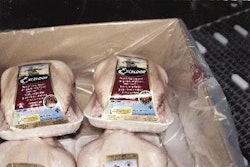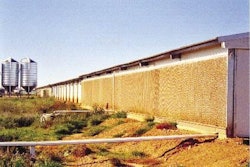Poultry producers may soon have a new and positive way to contribute to human health if reports from the ‘brave new world’ of biotechnology come true. Scientists at the Roslin Institute in Scotland – famed for the breeding of Dolly, the cloned sheep – say they are on the road to realising production of human drugs from industrial scale flocks of transgenic chickens.
Using the ISA Brown layer, the team led by Dr Helen Sang say they have produced lines genetically modified (GM) with human genes for targeted production of specific proteins that could be used as drugs to fight life-threatening human diseases including multiple sclerosis and cancer. The transgenic lines are not new breeds as some reports suggest but identical to normal ISA Brown birds except for inserted human genes. ISA Brown is a French breed from crossing Rhode Island Red and Rhode Island White breeds to give hens with egg yields approaching 300/year.
The team harvested embryonic cockerels from ISA Brown birds prior to hen egg formation and inserted the tiny groups of cells into ‘surrogate’ ISA Brown hen eggs. A virus particle vector carrying human genes for the desired triplet codes was subsequently used to carry the human genes right into nuclei of the embryonic cells for integration into the entire complement of bird DNA.
On hatching, the so-called ‘founder-cockerels’ were mated with non-GM ISA Brown hens to produce progeny containing the targeted human genes, and therefore triplet code matched human proteins in the albumen of eggs subsequently laid by new generation GM ISA Brown hens.
Other scientists have already produced transgenic animals but in most cases, the ability to synthesise the human proteins is lost after one or two generations. The Roslin team claims to have maintained the GM status of ISA Brown birds down through the generations without any loss of human gene complement. Continued success as measured by protein production is still there after five generations and a 500-bird GM flock has been established.
This could mean reality for industrial scale chicken farming producing so called ‘golden’ GM eggs with high concentrations of valuable pharmaceuticals virtually to order. GM lines to produce proteins closely related to interferon for treating multiple sclerosis and another producing miR24 for treatment of skin carcinoma, depending on the human genes used, are real possibilities.
These and other drugs are currently synthesised by fermentation in bioreactors using GM bacteria and other cells, but the process is expensive and generates a comparatively small amount of product. Implications of using GM hens in large flocks to produce an almost daily stream of eggs rich in precursors for human pharmaceuticals are enormous for drug availability and cost. What could be more natural than to produce life-saving drugs in nature’s own bioreactor?
Given the established resistance in Europe to GM foods, it is surprising that the North American biotech industry did not push this aspect of genetic engineering – production of human drugs – in the first place. But the journey is unlikely to be all plain sailing. Animal welfare groups are already claiming that genetic modification, like cloning, will create casualties with embryonic malfunction and young birds hatching with defects. Others would argue that GM hens have all the normal ISA Brown characteristics and functions, and that the human genes are additions and not substitutions, therefore arguing against such problems.


















